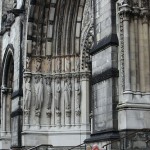Two trends in the housing crisis are intersecting in my practice: we’re seeing more loan modifications, all the while we see more and more homeowners with whopping negative equity. The question I’m asking each client eager for a modification is “what do you expect for this property five years from now?”
Most loan modifications are simply tacking the arrears to the loan principal and lowering the interest rate for some time. With a property already worth more than is owed, the arrearage gets capitalized, and the loan principal increases.
When the homeowner owes more than the property is worth, the only way that property can be sold or transfered is by short sale (if the lender agrees) or by foreclosure. The homeowner is now chained to the property and any disposition of that property in the near future will involve either a protracted negotiation with the lender or a foreclosure and a further hit to the borrower’s credit report.
There are several moving parts in this problem: how great is the deficit? for how long will the property be appropriate for the client? how does the mortgage payment in the modified loan compare to the cost of renting? Each different combination of factors produces slightly different analysis.
But the underlying issue remains: the real property is not really an investment any longer, even with a modified loan. It is a place to live presumably at a price you can afford today. When it is no longer affordable or appropriate, you will have a property that is essentially unsaleable in the conventional manner.
For many clients with loan modifications, we are just kicking the underlying problem down a road a ways.
What is obvious to me is that the






[…] After the Loan Modification: The Underwater House […]